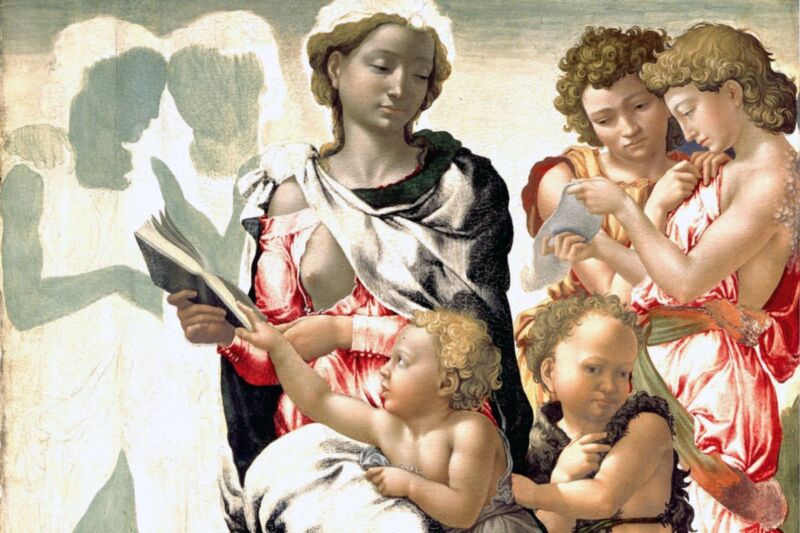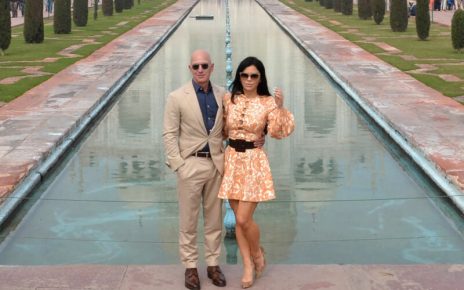
Enlarge / Detail of Michelangelo’s unfinished painting The Virgin and Child with Saint John and Angels (tempera on wood, ca. 1497), aka The Manchester Madonna. The outlines of two angelic figures on left are rendered in green earth tempera underpaint. (credit: The National Gallery London/Public domain)
Tempera is a painting medium that has been used to decorate everything from early Egyptian sarcophagi to India’s rock-cut temples. The medium was particularly popular with medieval and early Renaissance artists until it was eventually supplanted by oil-based paints. But while there has been a great deal of research on the chemistry of oil paints, tempera has been largely neglected in the scientific literature, according to researchers at the Sorbonne University in France.
To remedy that, the Sorbonne scientists recreated recipes for tempera written down by a medieval Tuscan painter, the better to analyze the flow properties and molecular organization of the paints, according to a recent paper published in the journal Angewandte Chemie. The aim is to gain a more precise understanding of the underlying chemistry in order to aid in ongoing conservation efforts on tempera-based artworks from the Middle Ages in particular.
Tempera in this context refers to a fast-drying paint in which colored pigments are mixed with a water-soluble binder—traditionally egg yolk, often augmented with an agent such as a few drops of vinegar to prevent cracking once the tempera has dried. The powdered pigment and distilled water would be mixed with binder directly onto the palette, or in a bowl. Liquid myrrh was sometimes added to offset the tempera’s rather pungent odor. Artists had to keep adding water as they worked because the medium dried so quickly, and in those days, tempera could not be stored because the yolk would begin to cure, thickening the paint. While tempera fell out of favor after 1500, it is periodically rediscovered. For instance, 20th-century artists like Jacob Lawrence and Andrew Wyeth used tempera in their work.





